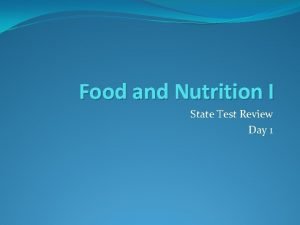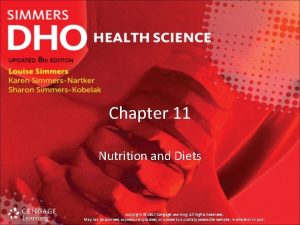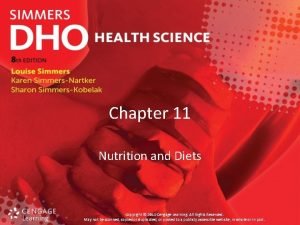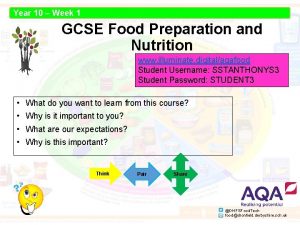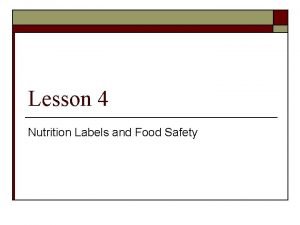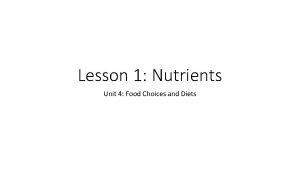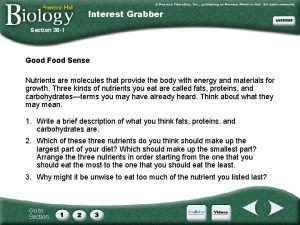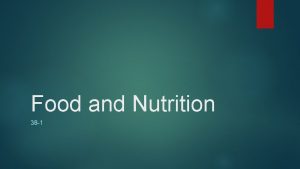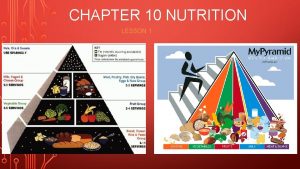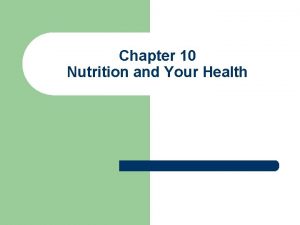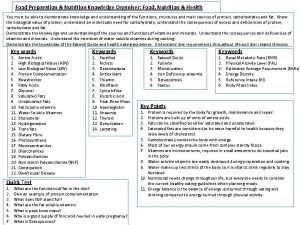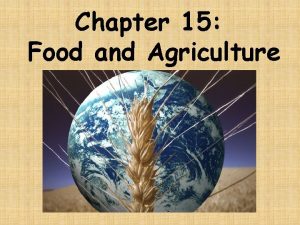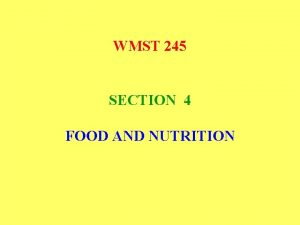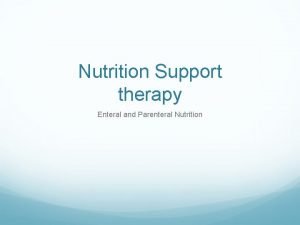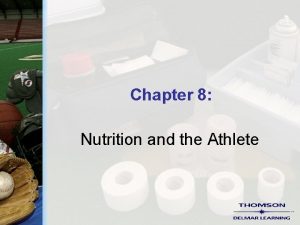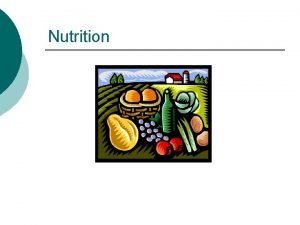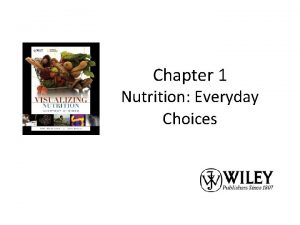Food and Nutrition in Humans Food Test and










- Slides: 10

Food and Nutrition in Humans Food Test and Storage

Food Test theory n Heat is required ONLY for Benedict’s test for reducing and non-reducing sugars n Reducing sugars are so called because they reduce blue copper sulphate (Cu. SO 4) in Benedict’s solution to a reddish precipitate

Food Test theory cont’d n Simple sugars are reducing sugars n Some complex sugars are also reducing sugars e. g. maltose n Sucrose, a complex sugar is a non-reducing sugar

Food Test theory cont’d n There is no direct test for non-reducing sugars n A non-reducing sugar can be broken down to simple sugars by heating it with a dilute acid like HCl (hydrolysis) n The resulting mixture is acidic and must first be neutralized by adding a small amount of alkali like Na. HCO 3 n The test for reducing sugar can then be carried out n The red precipitate obtained confirms that a non-reducing sugar was originally present

Table summarizing the method and results of food tests FOOD SUBSTANCES METHOD OBSERVATIONS FOR POSITIVE RESULTS Starch Add 2 -3 drops of iodine Blue-black Reducing sugar Add Benedict’s solution and heat Blue-green, yellow, orange red precipitate Non-reducing sugar i) iii) Add Benedict’s solution and heat to boiling Add (to fresh solution) dilute hydrochloric acid and heat. Add solid sodium hydrogen carbonate until fizzing stops. Add Benedict’s solution and heat I. II. Remains blue Blue-green, yellow, orange red precipitate Protein Add sodium hydroxide solution. Add 3 -4 drops 1% copper sulphate solution Purple or violet Fat or Oil Test 1. Rub or place a drop on absorbent paper Test 2. i) Add alcohol and shake ii) Pour clean liquid into water Grease spot (translucent) White emulsion

Complete the following table to indicate where and in what forms the named organisms store food ORGANISMS FOOD STORED SITE OF STORAGE (i) (ii) Sugar cane Irish potato Onion Mango Man

Complete the blank spaces in the following tale which shows the method and positive results of selected food tests PROCEDURE RESULT CONCLUSION Protein Present Add Benedict’s solution and heat Blue-black colour

Essay Type n n n (a) State clearly how you would test a sample of flour for (b) Include the apparatus and materials you would use (c) Describe the procedure and the results expected if positive q q Starch Reducing Sugar Protein Fat

TYPE OF STORAGE ORGAN STORAGE AREA EXAMPLE TYPE OF FOOD STORED Root tubers Root Cassava, sweet potato Starch, small amount of protein Tap roots Root Beetroot, carrot Sucrose glucose Stem tubers Stem Yam, Irish potato Starch, small amount of protein Rhizome Stem Ginger Starch, oils Corm Stem Dasheen Starch Bulb Leaves onion glucose

FOOD RESERVES AND SITES OF STORAGE IN SOME COMMON SEEDS STORAGE AREA PLANT EXAMPLE COTYLEDON(S) Peas and Beans Nuts Sunflower Seeds Cocoa ENDOSPERM Corn, Rice Coconut Castor Oil TYPE OF FOOD STORED Protein, Starch Protein, Oil Fat Starch, Protein Oil, Protein
 Three sink method
Three sink method Chapter 11 nutrition
Chapter 11 nutrition Test chapter 11 nutrition and diets
Test chapter 11 nutrition and diets Illuminate aqa food
Illuminate aqa food Lesson 4 nutrition labels and food safety
Lesson 4 nutrition labels and food safety Food and nutrition unit 4
Food and nutrition unit 4 38-2 the process of digestion
38-2 the process of digestion Rda food label
Rda food label 38-1 food and nutrition
38-1 food and nutrition Chapter 10 lesson 4 nutrition labels and food safety
Chapter 10 lesson 4 nutrition labels and food safety Chapter 10 lesson 4 nutrition labels and food safety
Chapter 10 lesson 4 nutrition labels and food safety
